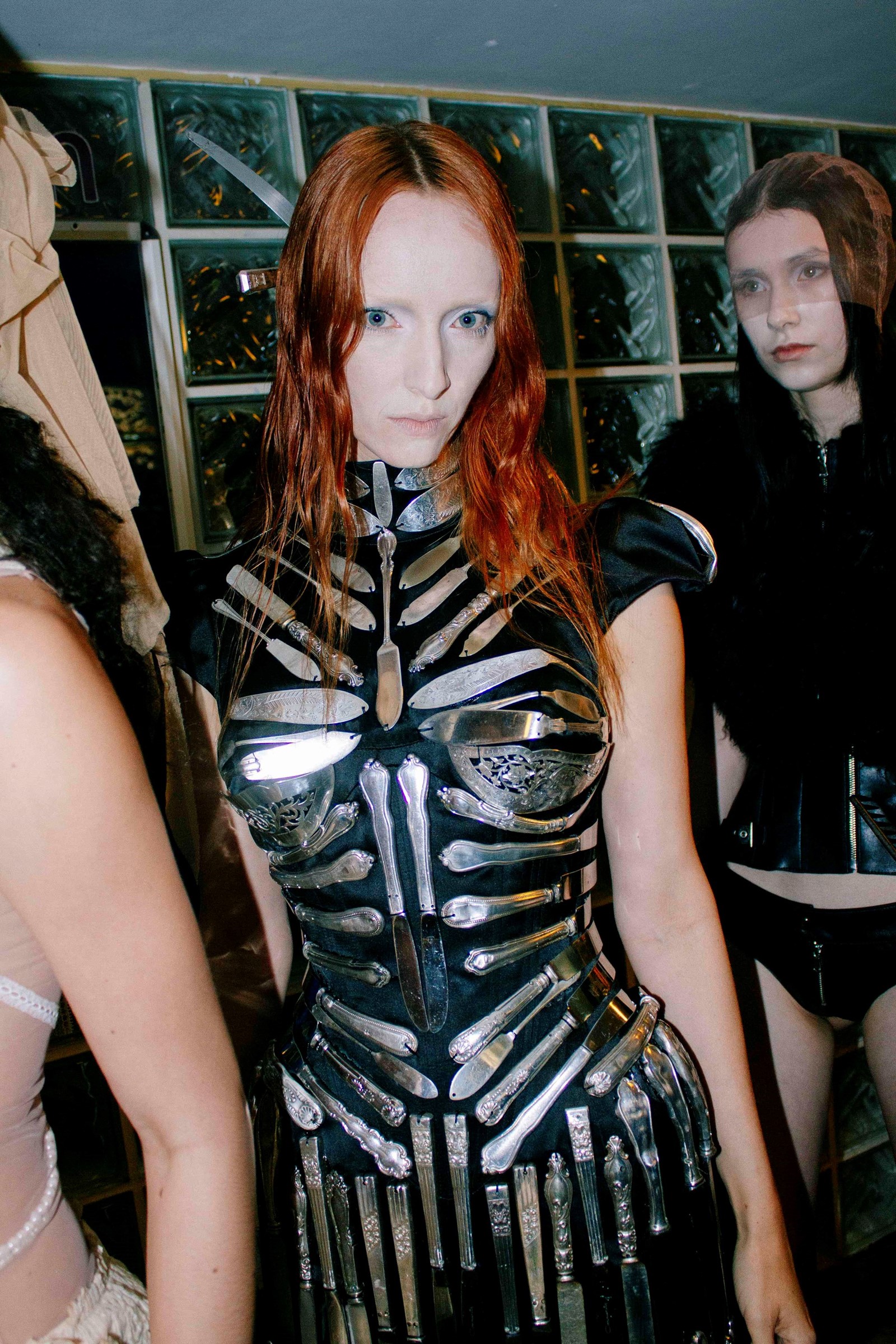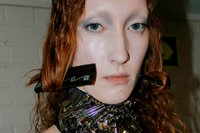It’s been an emotional few weeks for Dilara Findikoglu. When we speak on the phone in the days leading up to her Autumn/Winter 2023 show, the Turkish designer is still processing the immense earthquake that struck the Turkey-Syria border on February 6. “I have a lot of [Turkish] people working for me in the studio and it was just so sad,” she says of the disaster, which has left thousands dead and millions displaced in her home country. “We feel like crying some days but we are trying to be strong.”
Strength, as it happens, is a word that perfectly describes Findikoglu’s craft as a designer. Beneath the haunting beauty of her clothes – which are charged by mythic tales, occultic magic and raw sexuality – the designer always has something more pressing to say. She’s previously staged a seance to call an end to the climate crisis; shone a light on the suffering of child brides; and reflected on issues of gender injustice in her collections. She’s a designer who wants to inspire positive change, who dives bravely into issues affecting the world today and attempts to conjure up some hope from the darkness.
This season, Findikoglu’s message is her most powerful yet – or at least, her most viscerally impassioned. It all began when she saw the women-led protests unfolding in Iran last September, which were sparked by the death of 22-year-old Mahsa Amini at the hands of Guidance Patrol officers (or modesty police), who arrested and beat her for not wearing her hijab in line with government standards. “Something inside me really got triggered,” Findikoglu says of the demonstrations, which were the most widespread the country had witnessed since the 1970s, and saw many women burning their headscarves and cutting their hair in the streets. “Seeing them fighting like that, it really just inspired me. That’s what a real woman is.”
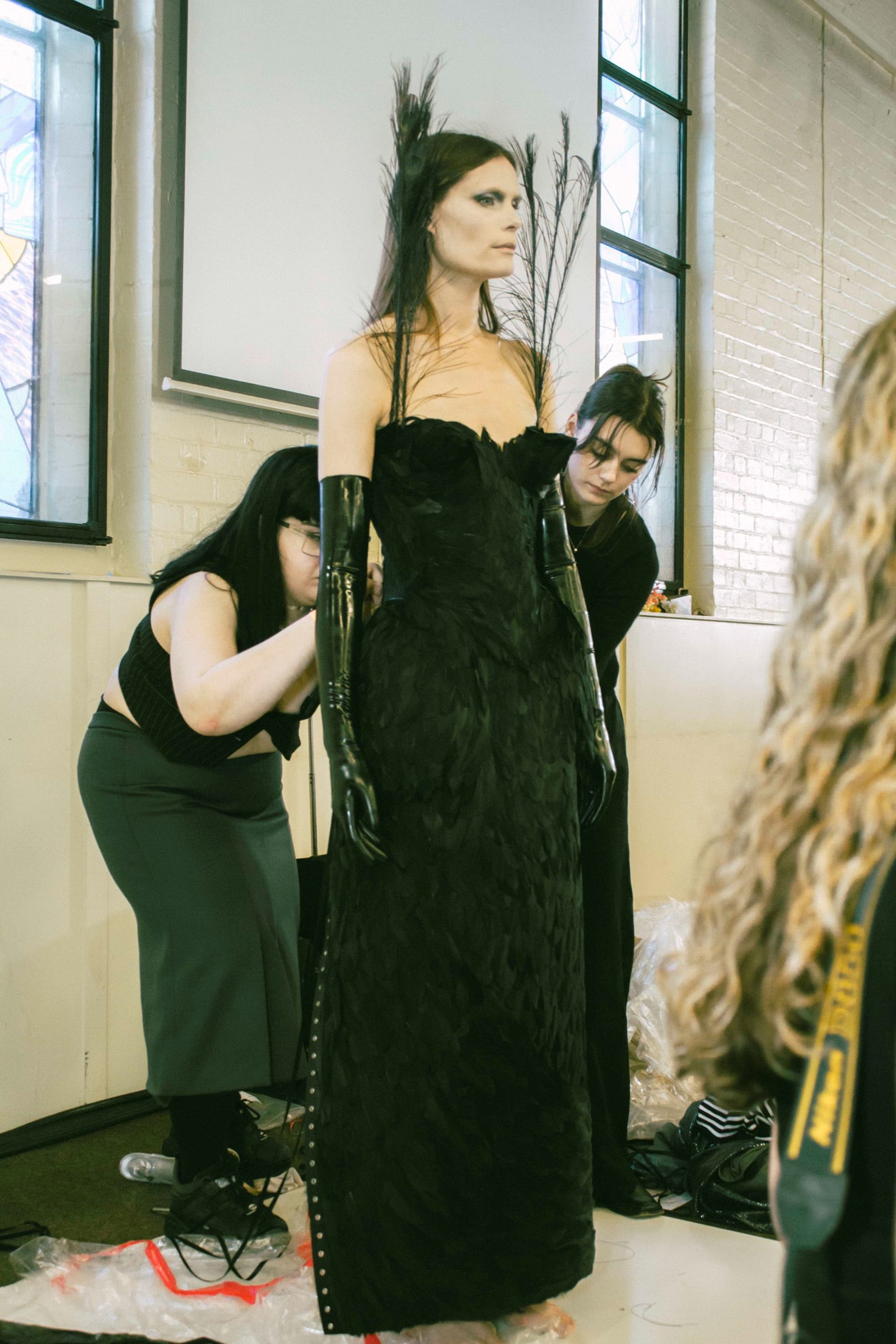
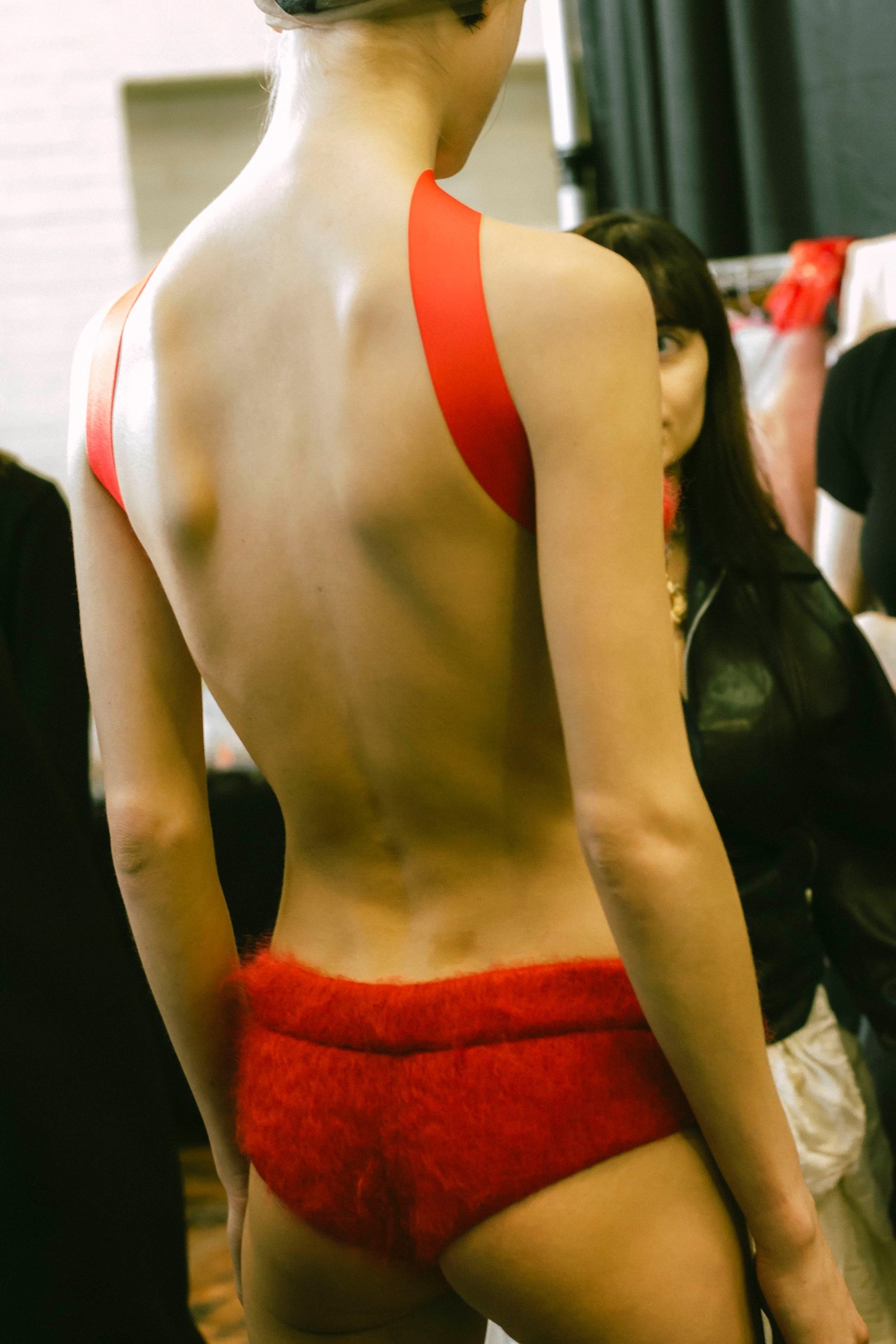
The protest ignited a fury in the designer. “There’s always this conversation about a woman’s body: how it should look, what we should wear, what jobs we should do,” she says. “I can’t express how angry this makes me.” The collection this swell of anger produced was revealed in a deconsecrated church in Bow, east London, on a sunny Monday afternoon at the close of a busy fashion week in the city. A bewitching display of bold, unapologetic sexuality, it saw a cast of the designer’s “warrior women” perform what she describes as a “ritual to take possession of our bodies back”.
“There’s always this conversation about a woman’s body: how it should look, what we should wear, what jobs we should do. I can’t express how angry this makes me” – Dilara Findikoglu
Twisting elements of historical dress with skin-baring, lingerie-style silhouettes, the collection navigated ideas of being trapped and liberated through various modes of dress and undress. Black leather and heavy wool gave way to lighter, transparent corseted looks; latex and chains referenced the world of bondage; and themes of unzipping and unbuttoning culminated in a few of the models stripping off layers in the middle of the room. As ever with Findikoglu, it felt more like a mesmerising piece of theatre than a fashion show.
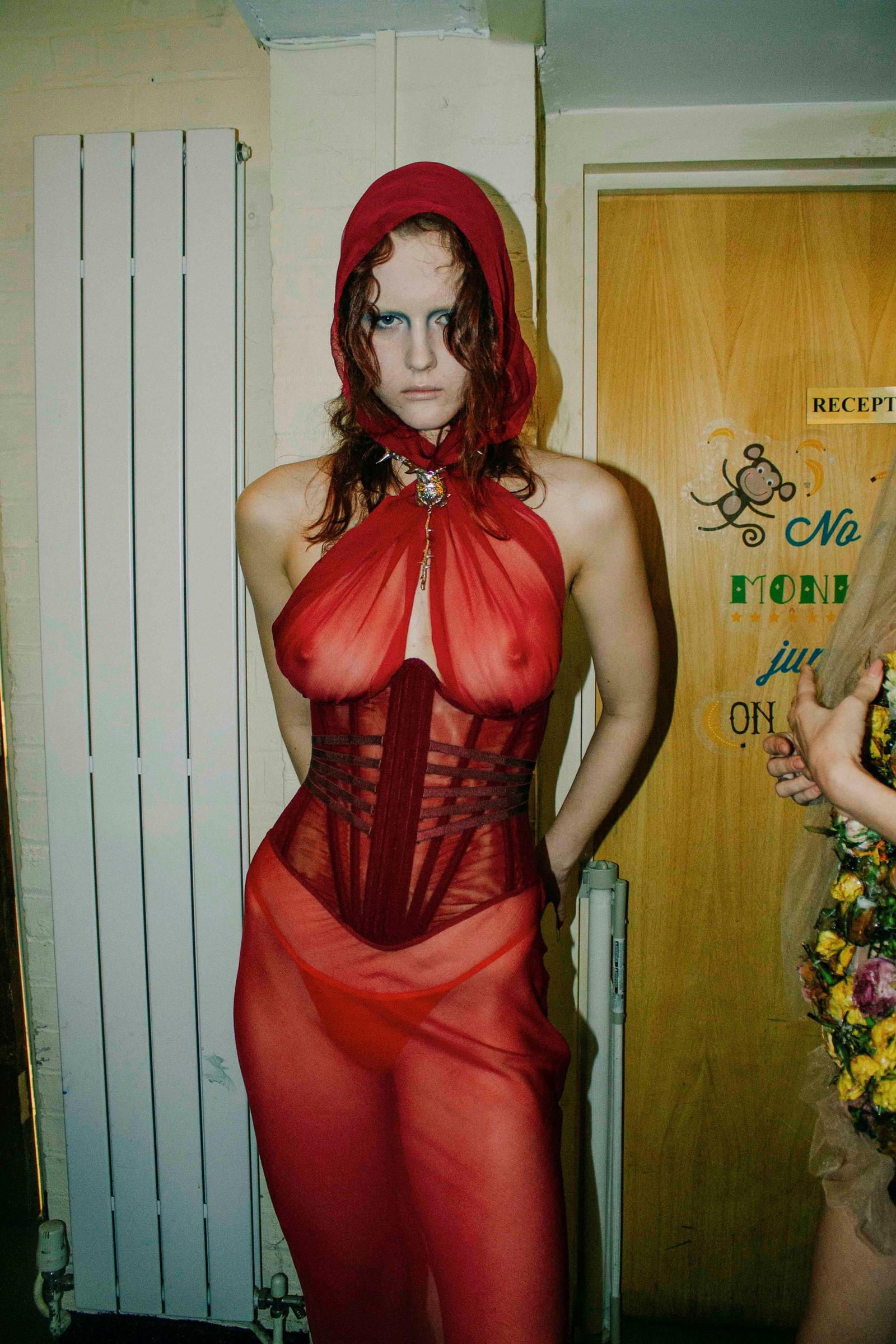
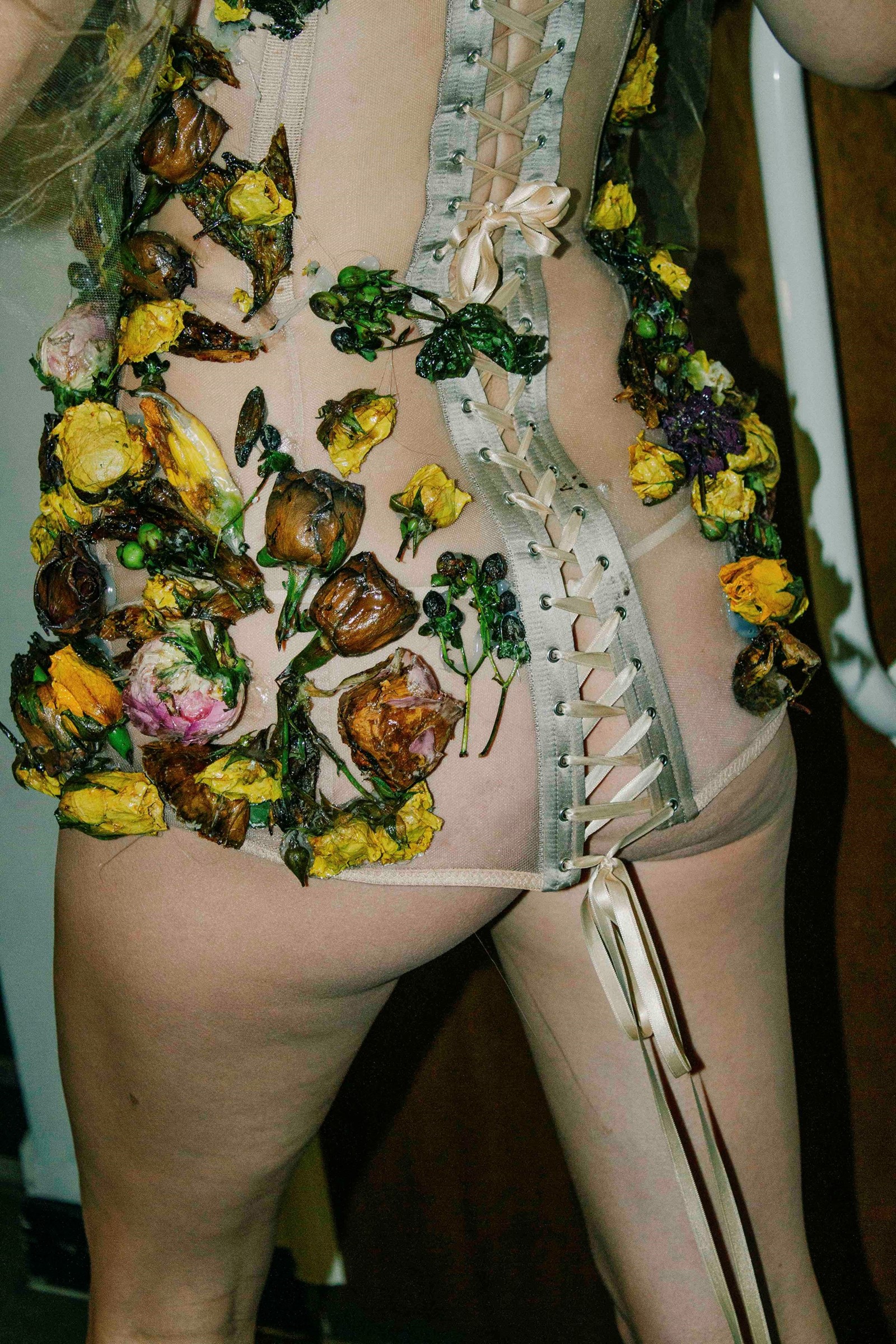
“It’s not even about [women] taking their headscarves off in general, because there are still lots of women who want to wear them,” she explains of the sentiment behind the show. “I don't want to be disrespectful to those people. It’s more about letting women choose what they want to do with their bodies. Let us fucking decide. So this collection is like my little revolution. I want to destroy modesty on the catwalk.”
Hair, an emotional theme of the Iranian protests, appeared in several of the designs, either trapped in snaking tendrils under tulle bodices or plaited into micro skirts, while elsewhere, dozens of silver hairdresser’s clips covered garments to resemble armour. Without straying into cliche, Findikoglu’s other main inspiration was found in strong but exploited female icons – and in particular, Marilyn Monroe, who she paid tribute to with an Old Hollywood-style white shaggy coat look. “She was one of the [news] topics during the [Iranian] revolution time,” the designer says. “When that movie came out [Blonde, 2022], I found it absolutely misogynistic. You exploit her, you victimise her, you do everything to make her look a certain way. That’s basically what I’m talking about here.”

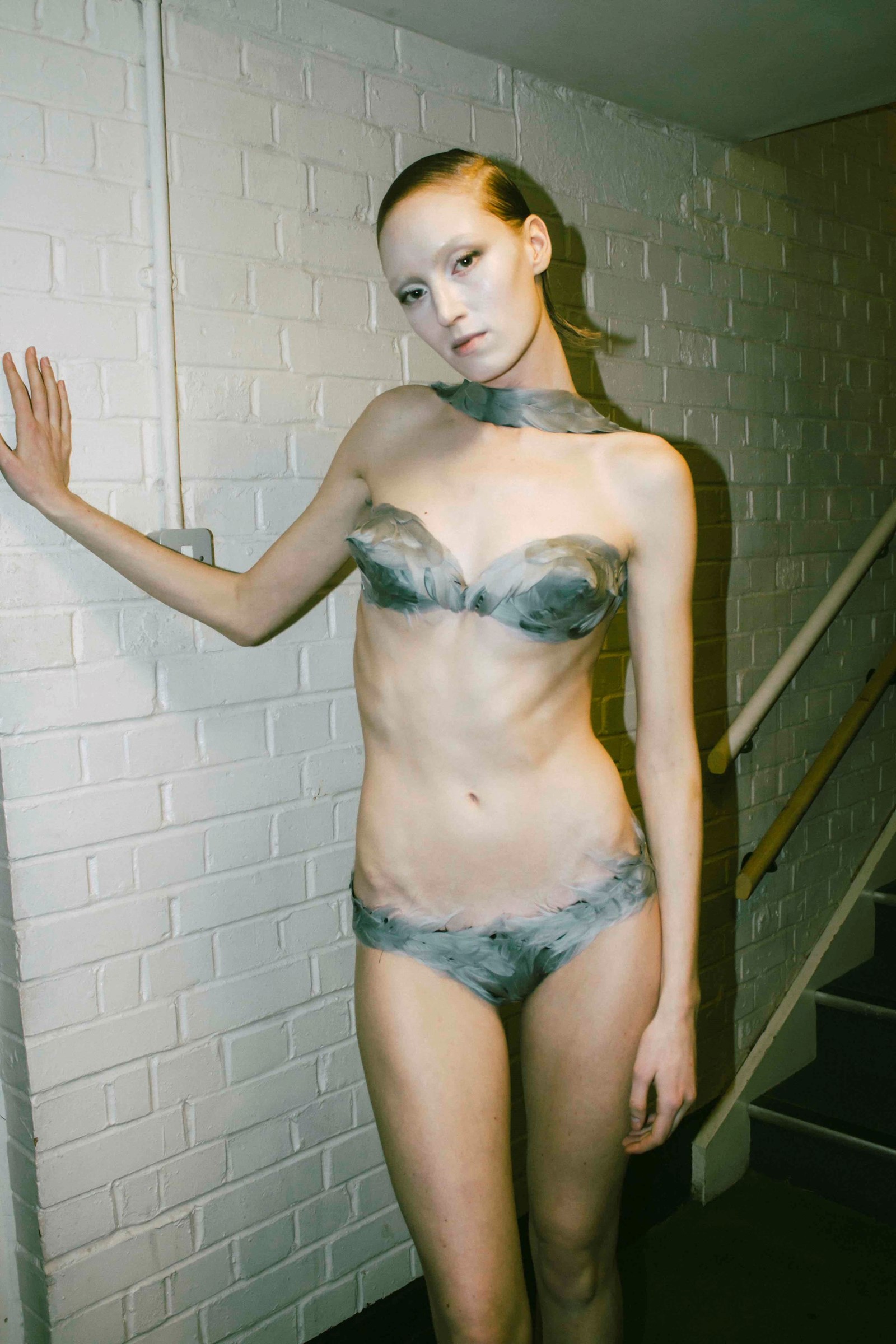
The collection’s furious message was reflected in a signature Dilara colour palette: inky black, slate grey, fleshy nude and, of course, her trademark red. “Red is the colour of the brand so we like to use it in every collection,” she says, adding, “it’s almost like black for everyone else.” This season though, with its focus on the female body and the violence it is so often subjected to, the colour took on a deeper meaning. “It’s the colour of blood, the body and it’s the colour of existing, actually,” the designer explains. “It’s the colour of life I think.”
While the collection was born from pain, protest and collective female rage, the resulting spectacle in the church – with its slow ritualistic movements and eerie soundscapes – was oddly serene. Its closing looks seemed to point towards a hopeful resolve of resilience, such as a gothic feathered dress and a downy grey lingerie two-piece that referenced the phoenix and its rebirth from ashes. But it was the jaw-dropping finale look that really captured the message of the collection – a tight, dramatic dress that saw the body encased in 200 Victorian knives. A representation of the immense bravery of the Dilara woman – and indeed, women all around the world – it was a defiant battle cry that seemed to say “enough is enough”. “This season is about us coming together to take our bodies back,” Findikoglu says as our call draws to a close. “I would like [women] to feel freed from all of their burdens. And I would like them to feel healed.”
